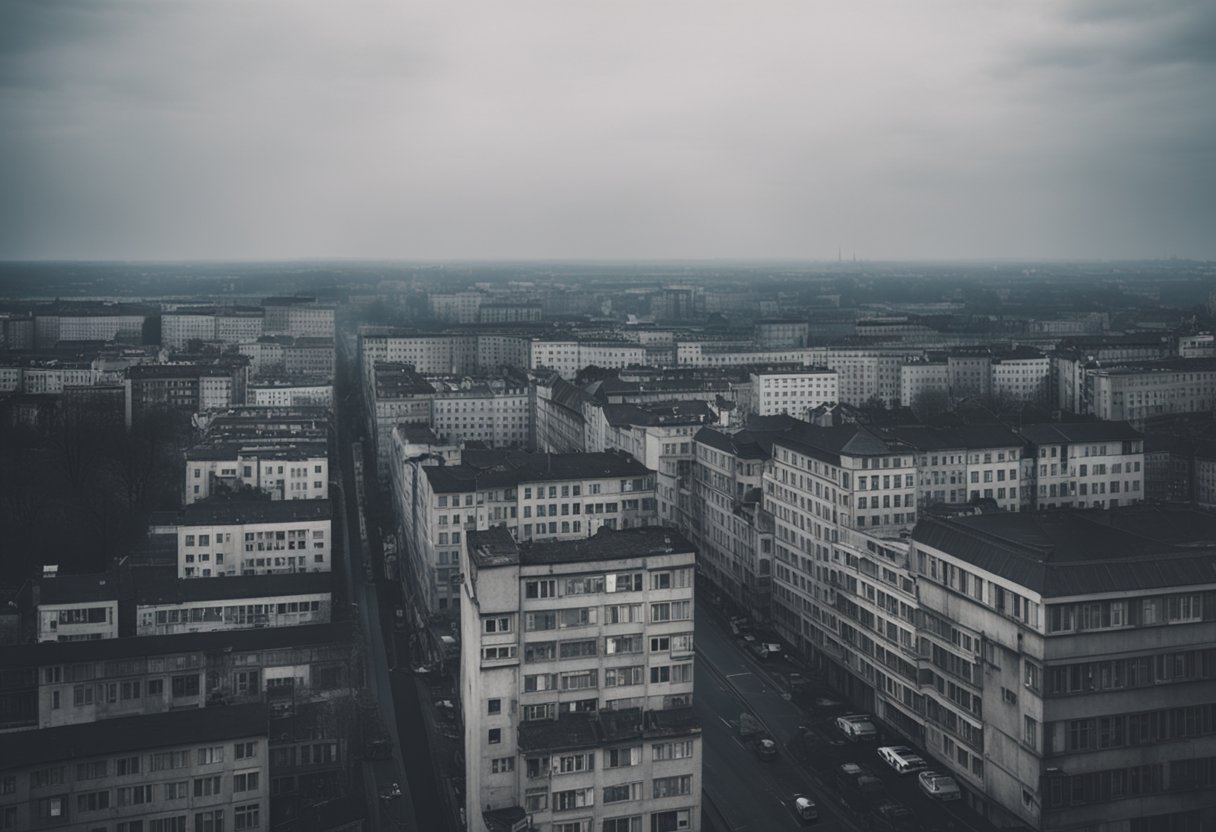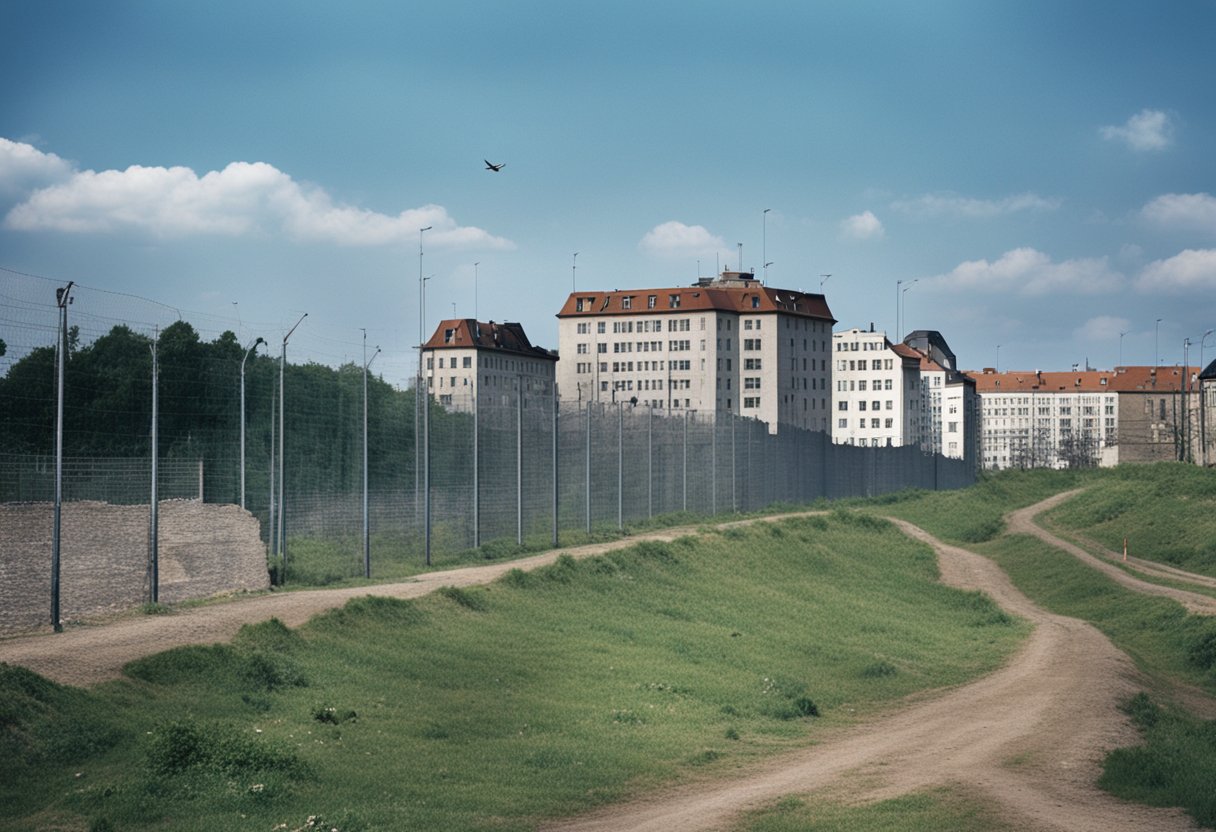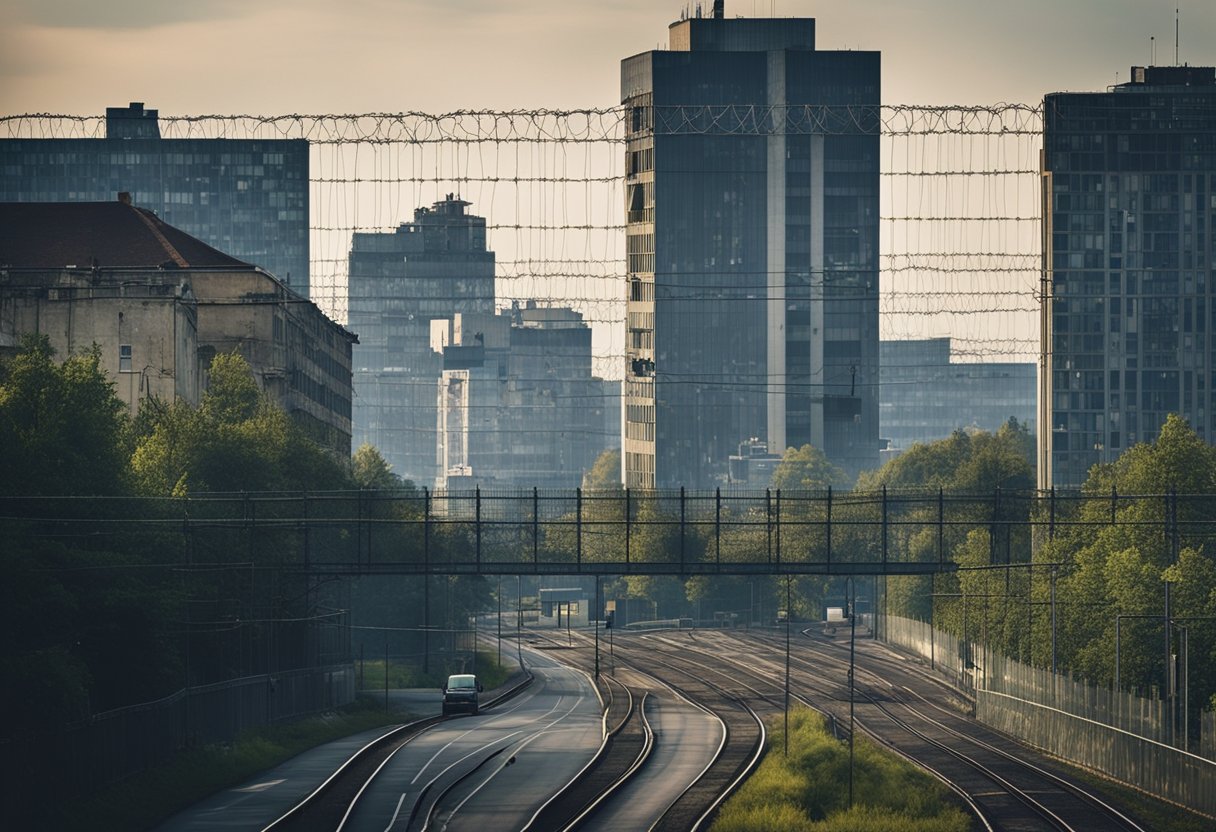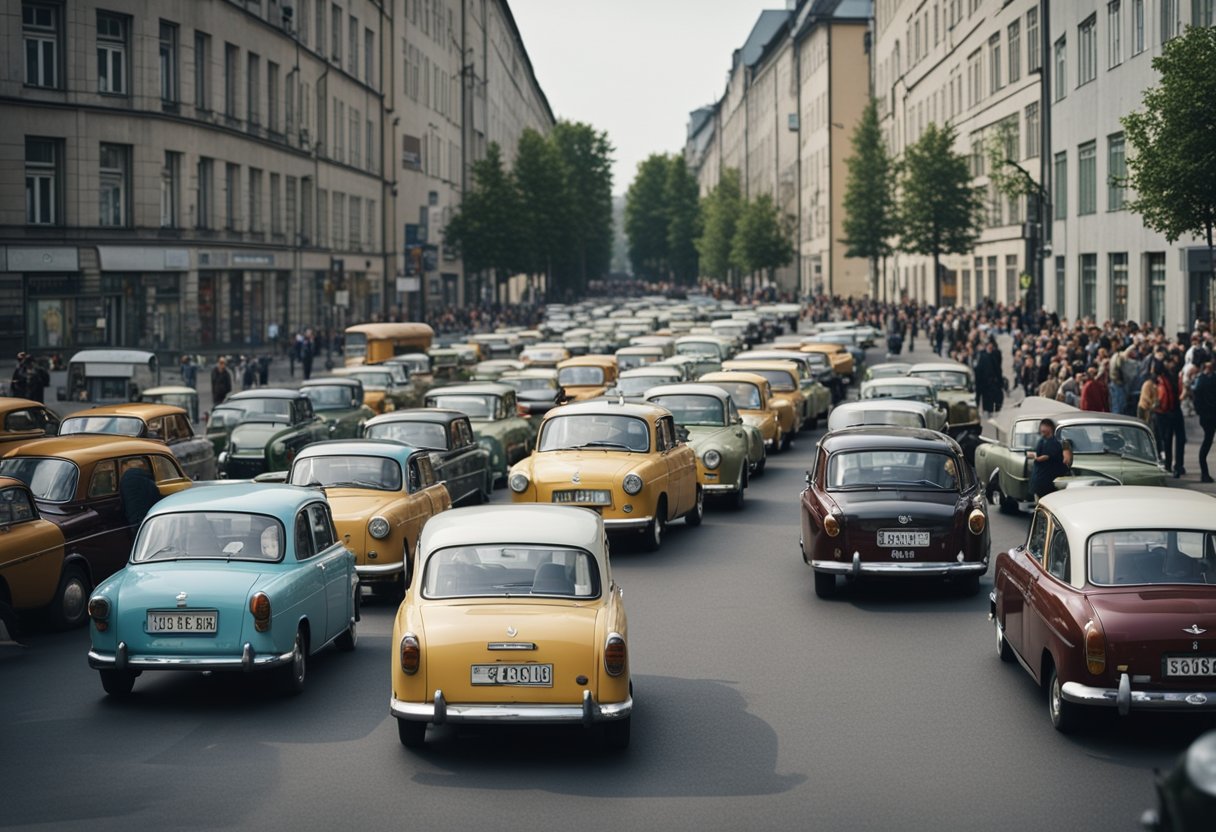Was Berlin East Germany? Throughout its turbulent history, has been a city of significant geopolitical intrigue, playing a central role in the Cold War narrative between the United States and the Soviet Union.
After World War II, Germany was divided into two separate states: the Federal Republic of Germany (West Germany) and the German Democratic Republic (GDR) or East Germany.
Berlin, despite being located entirely within the territory of East Germany, was itself partitioned into East and West, with East Berlin serving as the capital of East Germany while West Berlin was encircled by the East German state yet politically aligned with West Germany.
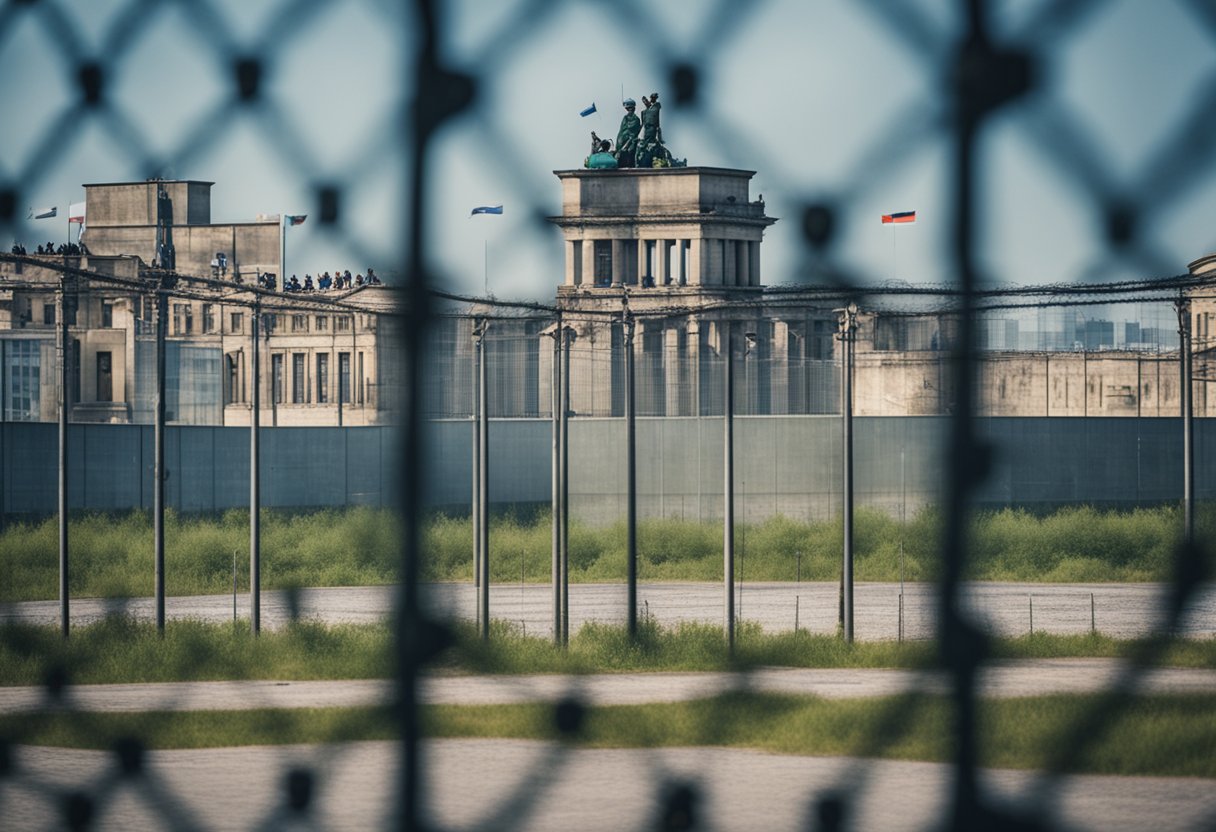
The Berlin Wall, erected in 1961, became the physical symbol of the “Iron Curtain” separating the democratic west and the communist east.
Far from separating all of Germany, the Wall specifically divided the city of Berlin, creating a stark contrast between East Berlin and West Berlin, which was recognized as an exclave of West Germany.
Control of East Berlin and East Germany was firmly in the hands of the communist government and its Soviet supporters, establishing an antifascist bulwark, as termed by the GDR, around West Berlin to prevent emigration from East to West.
Questions regarding Berlin’s placement within East Germany often arise due to the city’s unique status.
While geographically situated well within the borders of East Germany, the Four Power Agreement on Berlin (1971) maintained the special political and military status of Berlin, which meant that although administratively part of East Germany, it was subject to the influence and direct control of the Allied powers, specifically the Soviet Union in East Berlin.
This made the governance and affiliation of the city more complex than a simple belonging to East Germany.
Historical Context: Was Berlin East Germany?
In the aftermath of World War II, Germany’s fate was decided by the Allied powers, leading to its division into occupation zones and the eventual emergence of two separate states.
Post-World War II Division
After the fall of Nazi Germany, the Yalta Conference and the Potsdam Agreement laid the groundwork for post-war reconstruction.
Germany was partitioned into four occupational zones, each controlled by one of the Allied powers: the Soviet Union, the United States, the United Kingdom, and France. The city of Berlin, although located deep within the Soviet zone, was similarly divided into four sectors. This arrangement was overseen by the Allied Control Council.
The division of Berlin became a powerful symbol of the Cold War. Berlin itself, though geographically situated within the Soviet Occupation Sector, was partitioned among the four victorious powers, thus creating a unique political exclave—a West Berlin surrounded by East Germany.
Establishment of the German Democratic Republic
By 1949, the zones controlled by the United States, United Kingdom, and France were consolidated to form West Germany, formally known as the Federal Republic of Germany.
In the same year, the Soviet zone became East Germany, officially the German Democratic Republic (GDR). Berlin served as the capital of the GDR, even though it was separated from the rest of the East German territory, a situation that was both a geopolitical anomaly and a point of contention throughout the Cold War.
East Berlin, specifically, was proclaimed the capital of the GDR and was emblematic of a state trying to establish its sovereignty while being a hotspot of espionage, political intrigue, and the front line of the ideological struggle between East and West.
The influence of the Soviet Union was profound in both East Berlin and East Germany as they adopted communist governance structures. Conversely, West Berlin became a symbol of Western democracy and freedom within Soviet-controlled territory, further exacerbating tensions between the two powers.
The Berlin Wall and Division
The Berlin Wall was a formidable barrier that divided Berlin into East and West during the Cold War. It symbolized the ideological clash between Communism and the Western democracies.
Construction and Significance
The Berlin Wall was constructed in 1961 by the German Democratic Republic (GDR), commonly known as East Germany. Its purpose was dual-fold: to prevent East Berliners and citizens of East Germany from defecting to the West, and to stem the “brain drain” of professionals and intellectuals leaving for West Germany.
This concrete barrier extended for around 155 kilometers, encircling West Berlin, effectively making it an island of Western influence within a communist East Germany.
The significance of the Wall was immense. It stood as a physical and symbolic representation of the “Iron Curtain” that separated Eastern and Western Europe during the Cold War.
Within Berlin, the Wall ran through neighborhoods, severed streets, and divided families, exemplifying the divide between two worlds of different ideologies — the capitalist West and the communist East.
Checkpoint Charlie and Crossing Points
Checkpoint Charlie was the most famous crossing point between East and West Berlin, situated at the junction of Friedrichstraße with Zimmerstraße and Mauerstraße.
It became a symbol of the Cold War, serving as the single crossing point for foreigners and Allied diplomats. Aside from Checkpoint Charlie, there were several other checkpoints, but many were strictly limited to citizens of West Berlin or West Germany.
The crossing points at the Berlin Wall were heavily guarded by border guards and were the scenes of many attempts by East Germans to escape into West Berlin.
Despite its daunting presence, the Berlin Wall was permeated by thousands over its lifetime who sought freedom, influence, and a better life on the opposite side.
Political and Economic System
The political and economic landscape of East Germany was characterized by its alignment with the ideologies and practices of communist countries, markedly differentiating it from the capitalist West Germany. Central to this structure was a single-party state governed by the Socialist Unity Party.
Socialist Unity Party and Governance
The German Democratic Republic (GDR), or East Germany, was established as a socialist state following World War II. Control was firmly in the hands of the Socialist Unity Party (SED), which functioned through a system of centralized governance.
The SED commanded all aspects of political life, and the Volkskammer, or People’s Chamber, served as East Germany’s parliament, though it had limited genuine legislative power as policies were primarily determined by the SED leadership.
Command Economy and Planning
East Germany operated on a command economy, wherein the state directed nearly all economic activities. This structure involved meticulous planning and distribution of resources, with priorities on industrial equipment and the production of goods and services to meet the needs of its people and those of other socialist countries.
The existence of economic plans meant workers were assigned to roles that fed into the wider agenda set by the state, focusing on collective over individual profit. The intention was to create an economy without the capitalist market’s perceived inequalities and business cycles.
Life in East Germany
Life in East Germany was underpinned by its socialist structure and an omnipresent security apparatus. The social and economic aspects deeply influenced the everyday life of its population, while the Stasi’s repressive presence was a constant undercurrent.
Social Structure and Standards of Living
The German Democratic Republic (DDR) created a socialist society aimed at removing class distinctions, with an emphasis on equality for its citizens.
The social structure was characterized by a focus on the collective rather than the individual, with most property state-owned and a planned economy in place.
Every aspect of societal life, including jobs, education, and housing, was tightly controlled by the state. This system shaped the standard of living, aiming to provide for the basic needs of all citizens.
Workers were guaranteed employment; however, consumer goods often suffered from scarcity, impacting the overall standard of living.
- Population: The East German population lived within a societal framework where the state played a central role in their lives.
- Workers: Workers in East Germany were organized, and their roles were defined by the socialist state, contributing to the goal of a classless society.
Stasi and Repression
The Ministry of State Security, better known as the Stasi, was East Germany’s main instrument of repression. It was notorious for its extensive network of informants and its meticulous surveillance of the population.
The primary aim of the Stasi was to ensure the ruling party’s control by identifying and eliminating any dissent or opposition.
Individual rights were often secondary to the state’s perceived security needs, and the state security’s reach extended into every aspect of life, fostering an atmosphere of fear and mistrust among the population.
- Ministry of State Security (Stasi): The Stasi had immense power to monitor and control the East German population, operating under the guise of safeguarding the socialist system.
- Repression: The Stasi’s methods of control and surveillance were a form of state-sponsored repression, impacting nearly every facet of daily life in East Germany.
The Path to Reunification
The reunification of Germany was a multifaceted process marked by profound economic challenges, emigration pressures, significant political changes, and legal agreements that brought about the integration of East and West Germany.
Economic Challenges and Emigration
East Germany’s economy faced significant struggles, particularly a shortage of hard currency, which led to widespread dissatisfaction among its populace.
The pressure of economic stagnation, combined with limited freedoms, prompted large numbers of East Germans to emigrate to the West, where they sought better opportunities.
Die Wende and the Fall of the Berlin Wall
The term “Die Wende” refers to the pivotal changes that took place in East Germany leading to the fall of its government.
During this period, mass protests and crumbling Soviet control set the stage for the fall of the Berlin Wall on November 9, 1989. This event symbolized the end of the division between East and West Berlin and was a critical juncture on the path to German reunification.
Unification Treaty and Integration
The Unification Treaty was the legal framework that effected the accession of East Germany to the Federal Republic of Germany.
This agreement fulfilled the aspirations of Germans on both sides for a reunified nation. Following the treaty, a period of integration began, addressing political, social, and economic disparities to unify the once divided Germany.
Legacy and Remembrance
The division and reunification of Berlin have left a profound legacy, memorialized through various sites and impacting international relations to this day.
Memorials and Museums
In Berlin, the remnants of the Berlin Wall stand as stark reminders of the city’s divided past. The East Side Gallery, a portion of the Wall transformed into an art space, preserves symbolic murals that speak to the desire for freedom and reconciliation.
Checkpoint Charlie, once a crossing point between East and West Berlin, now serves as both a tourist attraction and a poignant reminder of Cold War tensions, with museums like the Mauermuseum documenting the history and escape attempts during the wall’s existence.
International Relations and Perspective
Berlin’s history as a city divided by the Berlin Wall and its role as a flashpoint between Eastern and Western Europe has had lasting impacts on international relations.
The fall of the wall is widely regarded as a pivotal moment in the decline of the Soviet Union and has come to symbolize the triumph of democratic principles over authoritarian rule.
Relations between the United States and the European Union were fundamentally shaped by the dynamics around Berlin, a city emblematic of ideological struggle that now champions unity and cooperation.
Frequently Asked Questions
Berlin’s division into East and West is a historical event marked by profound differences and a wall that stood as a symbol for the Cold War. The following frequently asked questions shed light on this pivotal time in history.
What were the differences between East Berlin and West Berlin neighborhoods?
East Berlin neighborhoods were characterized by Soviet-style architecture and a more collectivist society, reflecting the influence of the communist government of East Germany. West Berlin, on the other hand, exhibited more Western-influenced architecture and lifestyle, with greater economic prosperity and individual freedoms.
When did Berlin become divided into East and West?
Berlin became divided into East and West in 1945 after the defeat of Nazi Germany in World War II. The city was split into zones controlled by the Allied powers, and in 1949, this separation formalized into two distinct entities.
What was the purpose of the Berlin Wall’s construction?
The purpose of the Berlin Wall’s construction in 1961 was to prevent East Germans from defecting to the West. It was a physical barrier that not only divided the city but also served as a symbol of the ideological divide between the capitalist West and the communist East.
How long did the division of Berlin into East and West last?
The division of Berlin into East and West lasted for almost 45 years, from the end of World War II in 1945 until the fall of the Berlin Wall in 1989, which led to the reunification of Germany in 1990.
What led to Berlin being divided after World War II?
Berlin was divided after World War II as a result of the Allies’ agreement at the Potsdam Conference to occupy and administer Germany in zones after its unconditional surrender. The Soviet Union’s differing political and economic ideology from the U.S., UK, and France led to tensions and Berlin’s division.
What methods did West Germans use to travel to Berlin?
During the division, West Germans could travel to Berlin through designated transit routes by road or rail. These routes were heavily monitored, and travel was subject to East German regulations. Air access was also available through three air corridors to West Berlin’s airports.
